Port Washington Public Library, LHSA+DP, Stalco and SCC finish $2.8 million redevelopment of 5,500 s/f space
Port Washington, NY Port Washington Public Library, Lee H. Skolnick Architecture and Design Partnership (LHSA+DP), general contractor Stalco Construction, and construction manager SCC Construction Management Group have completed the $2.8 million redevelopment of the library’s children’s section. The newly named Jackie and Hal Spielman Children’s Library is fully modernized, and – at 5,500 s/f – larger than the former children’s section, which was initially built in 1976. The Children’s Library serves more than 7,600 children and parents throughout the year. The library’s goal was to renovate the children’s room without using any tax assessments or issuing any bond, so as not to put a tax burden on local residents. Instead, the library raised $1.5 million from private donors from the local population. One of the largest such donations came from Domenick Vultaggio, the co-founder of locally-based company AriZona Beverages USA. The rest of the cost came from the library’s existing funds.
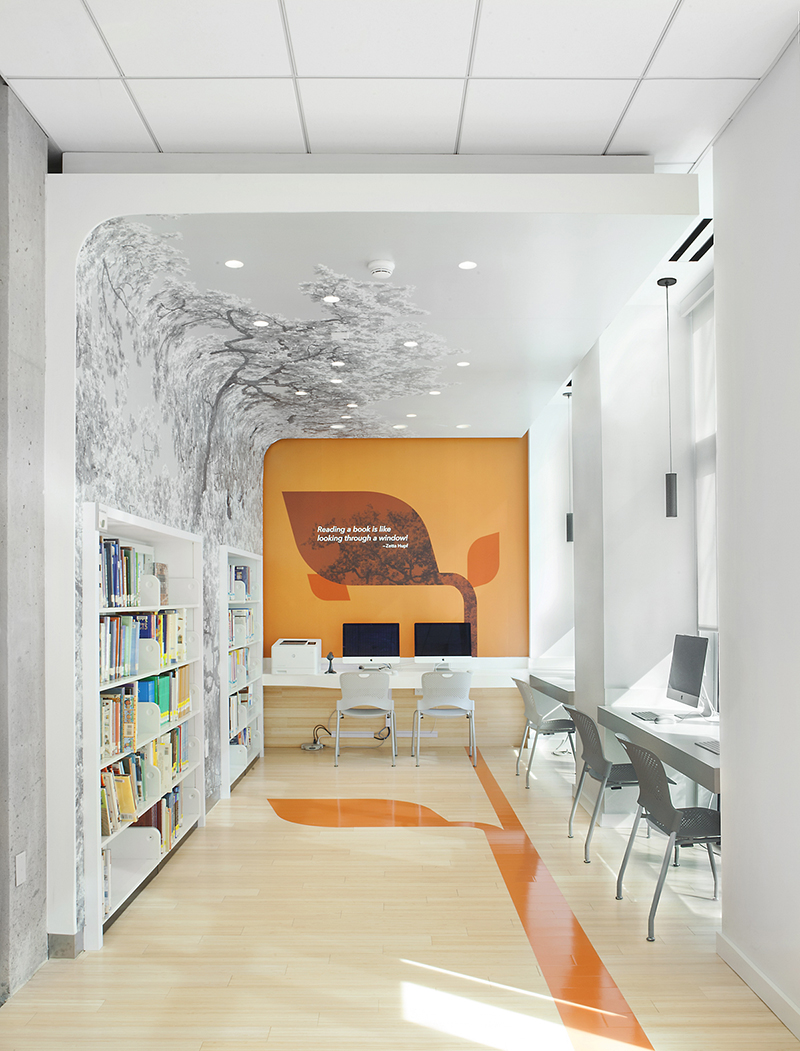 “The Children’s Library was last renovated 20 years ago and had become outdated. We wanted to develop a creative space that incorporated technology and addressed the many learning styles of children of all ages,” said Nancy Curtin, Port Washington Public Library director.
“The Children’s Library was last renovated 20 years ago and had become outdated. We wanted to develop a creative space that incorporated technology and addressed the many learning styles of children of all ages,” said Nancy Curtin, Port Washington Public Library director.
“The design and construction team delivered an extraordinary Children’s Library that has thrilled children, their parents, and staff members alike,” she continued.
“We demolished the entire children’s area and then worked to bring a smart new design, furnishings, and technology to children of all ages to help them learn, explore, and create. The new space features a high number of custom elements developed by the LHSA+DP team that aim at stimulating children’s curiosity and desire to learn,” said Alan Nahmias, President of Stalco. To this end, the Stalco team built areas not only for reading and storytelling, but dedicated areas for creative and “messy” projects, in keeping with new and exciting trends in educational philosophy and programming. The new children’s section is now ADA-compliant, too.
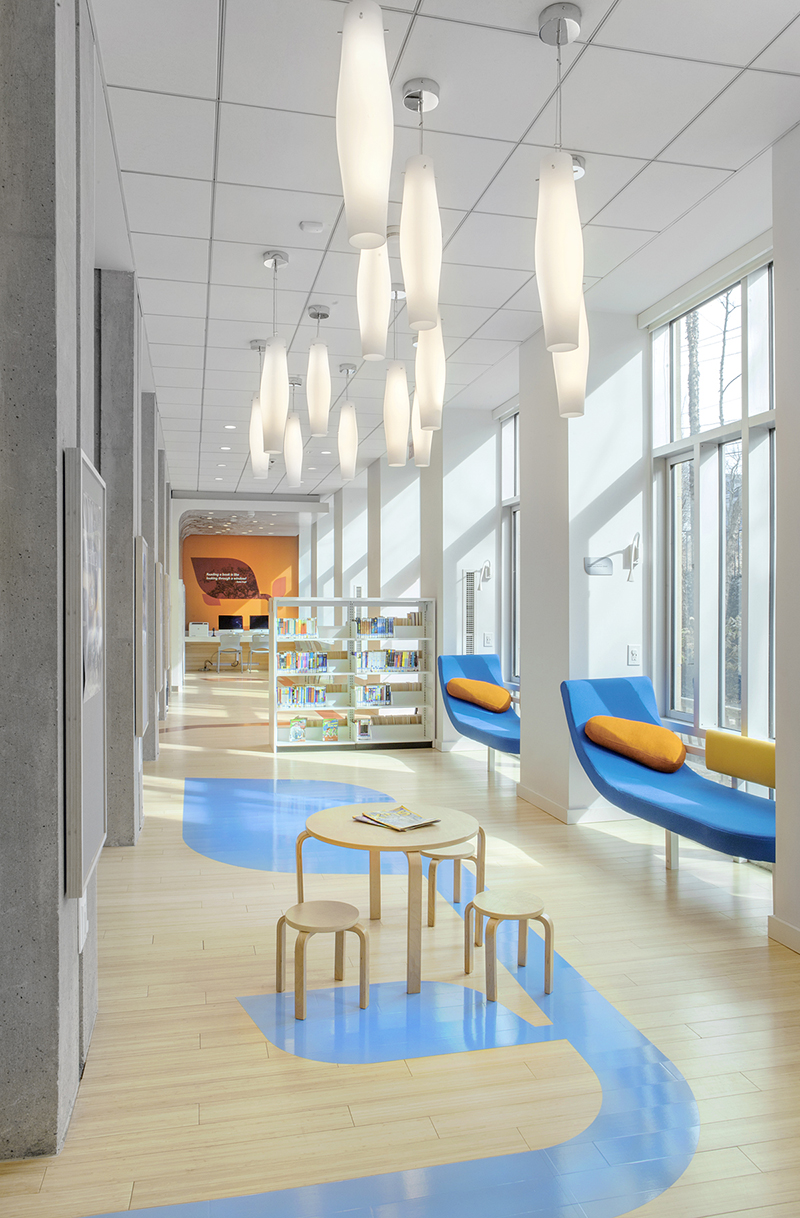 The office of Lee H. Skolnick Architecture & Design was asked to revitalize the Children’s Library, making it more cheerful, child-and-family friendly and easier to navigate but the design does much more. Using a “Tree of Knowledge” theme, the Skolnick team invented a colorful central icon that provides the space with a specific, playful identity as well as an intuitive wayfinding device that directs guests to the various programmatic areas of the library. Colorful wall graphics and inspirational quotes; modern yet comfortable furnishings; energy efficient lighting and natural daylighting; digital and open-ended hands-on interactives; a recycling center and highly effective acoustical treatment all combine to create a welcoming atmosphere that inspires a wide range of learners, from the very youngest to their parents and caregivers. Lee Skolnick, founder of the firm, architect and design principal, explains that, “The ‘Tree of Knowledge’–with its implications of both comforting shelter and the excitement of reaching out and exploring the world–becomes an even more powerful metaphor for the ‘Tree of Life’.”
The office of Lee H. Skolnick Architecture & Design was asked to revitalize the Children’s Library, making it more cheerful, child-and-family friendly and easier to navigate but the design does much more. Using a “Tree of Knowledge” theme, the Skolnick team invented a colorful central icon that provides the space with a specific, playful identity as well as an intuitive wayfinding device that directs guests to the various programmatic areas of the library. Colorful wall graphics and inspirational quotes; modern yet comfortable furnishings; energy efficient lighting and natural daylighting; digital and open-ended hands-on interactives; a recycling center and highly effective acoustical treatment all combine to create a welcoming atmosphere that inspires a wide range of learners, from the very youngest to their parents and caregivers. Lee Skolnick, founder of the firm, architect and design principal, explains that, “The ‘Tree of Knowledge’–with its implications of both comforting shelter and the excitement of reaching out and exploring the world–becomes an even more powerful metaphor for the ‘Tree of Life’.”
Overall, LHSA+DP sees libraries as the nexus of their communities, a kind of hub around which each community revolves. Thus, new library design should respond to the expanding interests and greater demands of the public. To create the optimal space for Port Washington, LHSA+DP began by using their three-step Interpretive Master Planning process, which begins with an immersive review of stakeholders’ needs, culture, and vision for the new library space. In the second step, the design team created a preliminary site and facility analysis and began preliminary conceptual planning and design. During the third step, the firm created a Master Plan Summary Report, complete with key project findings and recommendations, a preliminary conceptual design, and a specific timeline.
Via its Master Planning process, LHSA+DP knew they had to create a single community space and informal learning environment for toddlers, tweens, and all ages between. This led to the central concept of a “Tree of Knowledge” for the space that will serve as a focal point to orient patrons. It is both an almost literal representation of a tree – complete with aluminum branches, leaves, and decal roots – and a metaphorical one that is based on developmental psychologist Howard Gardner’s theory of multiple intelligences. Gardner broke down intelligence into broader categories that reflect the different ways in which people think and learn. Further, the tree also recalls Piaget Theory, posited by Jean Piaget, in which he delineates four childhood development stages. Thus, each “branch” and “root” of the tree unfurls into a specific area within the space. Each colored tendril leads to an area within the children’s section dedicated to a certain age group or type of activity for self-guided exploration and discovery.
Interior Layout and Features
In the center of the space, near the entrance to the Children’s Library, is the Information Desk. Behind the Information Desk is the focal point of the space: the above-mentioned Tree of Knowledge, a brightly colored floor-to-ceiling tree with aluminum branches and decal roots on the floor. The leaf and branch motifs denote “Play,” “Think” (quiet study), “Listen” (music area), and “Connect” (a learning commons media area). Therefore, a distinct learning style or age group is designated for each of the different areas of the Children’s Library, each of which encourages children to use and develop that intelligence and explore related subject matter.
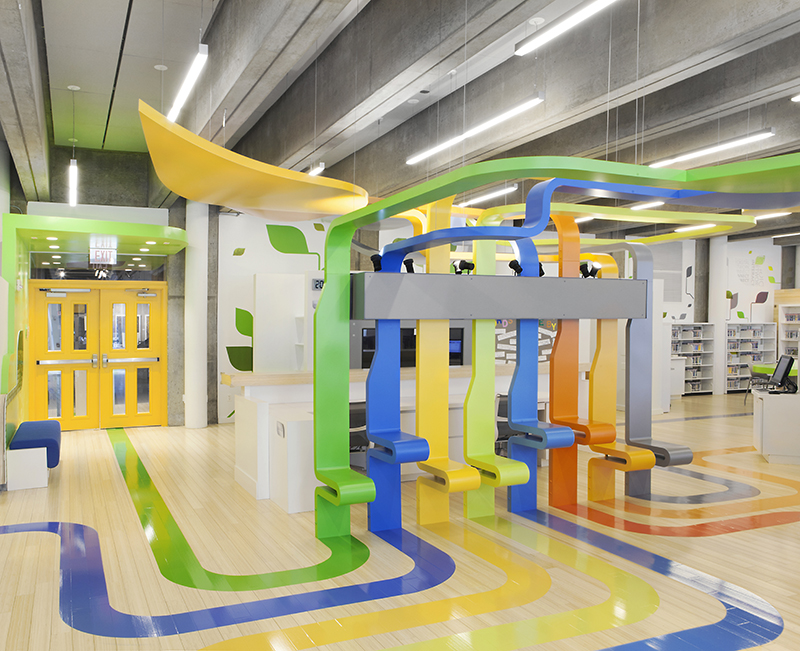 For example, the Early Childhood branch of the tree leads to the Early Childhood area, which features a cushioned floor and toddler-sized bookshelves, benches, and chairs. Three portals in the floor of the Early Childhood area each features a small interactive display with seasonally changing content provided by museums and local historical places. A map on the wall has activity panels where the children can play with interactive magnets.
For example, the Early Childhood branch of the tree leads to the Early Childhood area, which features a cushioned floor and toddler-sized bookshelves, benches, and chairs. Three portals in the floor of the Early Childhood area each features a small interactive display with seasonally changing content provided by museums and local historical places. A map on the wall has activity panels where the children can play with interactive magnets.
The Story Corner area is an expandable story area with moveable monitors and flexible seating. It features a suspended canopy both designed and created by AriZona Beverages’ Don Vultaggio, whose avocation is design and construction work. (In fact, he performs a great deal of such work for his company.) Vultaggio donated a total of three canopies (the other two are affixed to the inside and outside of the main entrance into the space). A large curtain in front of Story Corner can be closed for privacy. Vultaggio also donated and helped to create a host of bright and impressive full-height graphic decals that will be mounted on the east, west, and south walls of the main space, totaling 1,500 square feet. He also donated and fabricated the Children’s Library’s new entry portal and donor panel with 3-D lettering. In addition, Vultaggio donated the 455-square foot contour-cut vinyl wall graphics in the Quiet Study Area and the Reading Nook, Story Circle’s 10’x10’ leaf-shaped suspended ceiling canopy, three leaf-shaped frosted-translucent vinyl graphics placed on the southern windows of the Tween Area, and 15 individual aluminum donor plaques for mounting throughout the room.
The Reading Nook has custom-designed, curved benches and built-in casework. Children can sit on different levels in the Reading Nook. For visual warmth, there is carpet tile on floor. Within the Nook are observation cases and bookshelves within easy reach, with windows overlooking a newly landscaped backyard, an outdoor seating area, whirligigs, and a kinetic water feature.
A special Tween Area has been built specifically for fifth and sixth graders, those who are between childhood and the teen years. Prior to this, tweens were without a dedicated area to call their own. Now, the space encourages them to work alone or collaboratively, along with the technology to help them succeed. Their space provides curved benches with pillows along the windows. Each window bench bay has an adjustable-position gooseneck light and a tablet connection and charger, creating a listening and reading station where a youngster can interact with music, spoken word items and podcasts, as well as e-books. Young patrons can review the information on the tablet while looking outside into the yard. This section also features two tables and chairs with heights and a design appropriate for tweens. Two book stacks on each end of this section visually separate it from the adjacent areas.
The Quiet Study Area is, obviously, for quiet independent and group study. Counters with computers and seating have been installed for a number of young patrons.
A Workshop Room allows for demonstrations and interactive activities with the children. There is a lot of high-end bamboo millwork and plastic laminate shelving throughout. A giant leaf-shaped window cuts into the wall and visually interacts with the Tree of Knowledge, a leaf-shaped Multimedia Area table, and floor decals branching into the workshop area. The Workshop section, which houses two white boards and projectors as well as tables with power and data connections, also serves as a conference room and a community meeting facility when the children’s library is not in use.
Between the Information Desk and the Workshop Room is the Multimedia Area. It features a custom, bright-green millwork table shaped as a giant leaf. This area is filled with DVDs and other multimedia stacks, and an activity wall that has an oversized, interactive television screen embedded within it. Children can play educational games using the touch screen.
The rest of the space is fitted with a multitude of bookshelves and display cases, with benches along the walls. All of these items were custom made just for this library space. The team also created an office area with shelving and countertops for computers.
Finally, Stalco installed approximately 90 acoustical panels in the ceiling to help tone down the inevitable noise from the various sections. The exposed-concrete ceiling (maintained from the original library design) features protruding beams separated by bays into which the team installed the panels. Lighting fixtures were installed into the acoustical panels.
Challenges
All work took place while the rest of the library was in operation, so much care was taken to minimize noise and dust. At times, this necessitated working overnight, outside of library hours, between 10:00 pm and 8:00 am. In addition, the construction team used two completely separate entrances from those that patrons used, so that work never interrupted foot traffic. One entrance was in the back of the library, adjacent to the Children’s Section, and the other was through the main entrance, using a separate stairwell just for construction purposes.
The space was enlarged slightly, by incorporating a room that had been previously used for other purposes. Incorporating this room proved to be a challenge, as the existing wall – made of 12 inches of solid concrete – had to be cut precisely, in order to create the Story Corner. According to Stalco Vice President Joseph M. Serpe, “We had an engineer design the supporting wall above the cut beam and got the loads calculated and had to engineer the shoring. Then we brought in a remotely operated saw, put a track on the wall, programmed it, and directed the cutting process through a Bluetooth connection. It was a very painstaking operation.”
Much careful coordination was undertaken on many aspects of the renovation, since the design called for a multitude of custom elements to be incorporated into the new library – such as the portals, curved benches, and graphics. The Early Childhood Area, for example, was the only part of the Library where the concrete floor slab had a lower elevation than that of the rest of the space. The team took this particular challenge as a creative opportunity, installing the three custom-fabricated portals flush with the floor. They used bespoke aluminum-framed flange mounts into which they installed clear plexiglass units and LED lighting, to illuminate the changing displays.
Other custom aspects included the bamboo flooring, specifically, the area where the conference room meets a classroom wall. At this juncture, the flooring curves up the wall and continues as a wall finish – certainly not a run-of-the-mill installation. Additionally, that wall features metal reveals that had to be custom-fabricated to properly accommodate the design. The bamboo’s substrate support level also had to be curved at the wall, and then the bamboo planks were cut down to fit the curvature.
The Tree of Knowledge also provided some challenges. Typically, Stalco would receive a completed design for the tree. In this instance, the team received a 3D model that it had to subsequently engineer. Stalco’s design team put together a complete design for the tree that it then constructed in collaboration with a fabricator, Maltbie. Maltbie laser-cut the tree’s aluminum-and-steel components on a computer numeric control (CNC) machine, then powder-coated them and brought them to the site to piece together the tree.
Finally, Stalco took great care to match every finish and every color exactly. The bamboo millwork and the bamboo flooring came from different contractors, for example. Products that came in from one did not necessarily match the other, so the team had to refuse certain batches of materials until proper matches were made. Similarly, Stalco had to ensure that the colors powder-coated on the trunk and branches of the Tree of Knowledge exactly matched the color-coded lines installed on the floor.
NYC mayor and DOB release comprehensive façade inspection and safety study conducted by Thornton Tomasetti



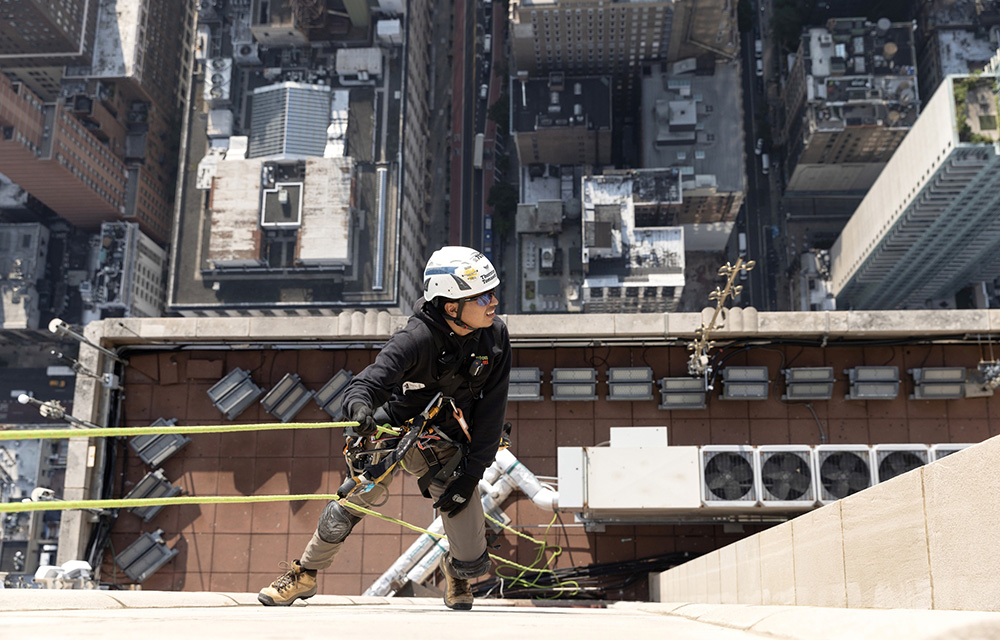
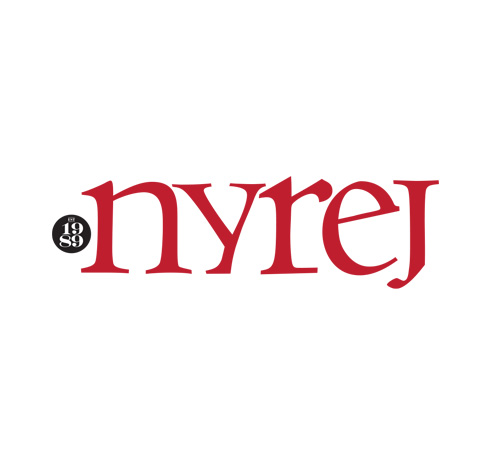
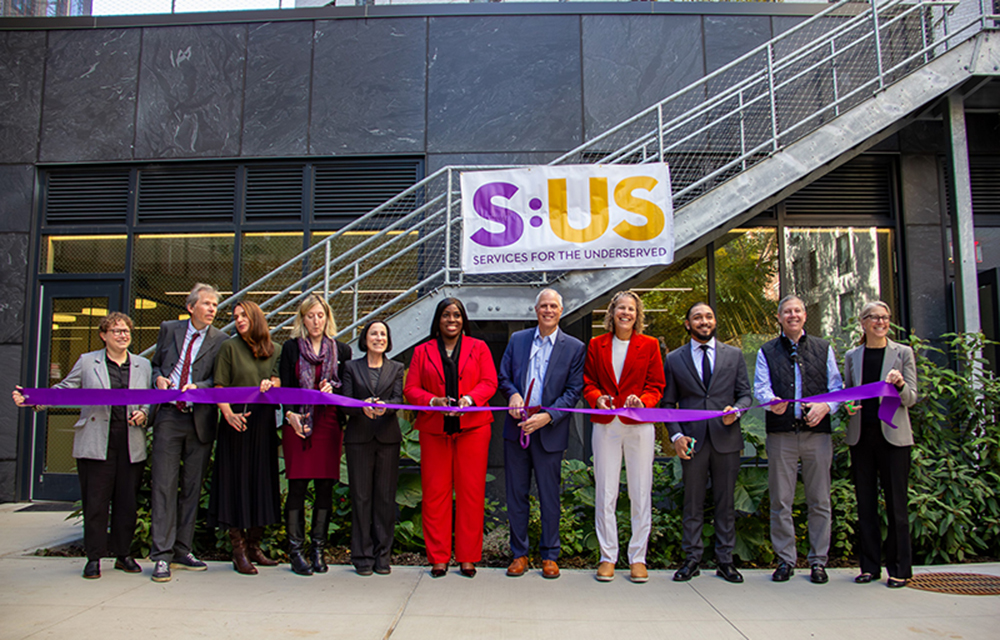
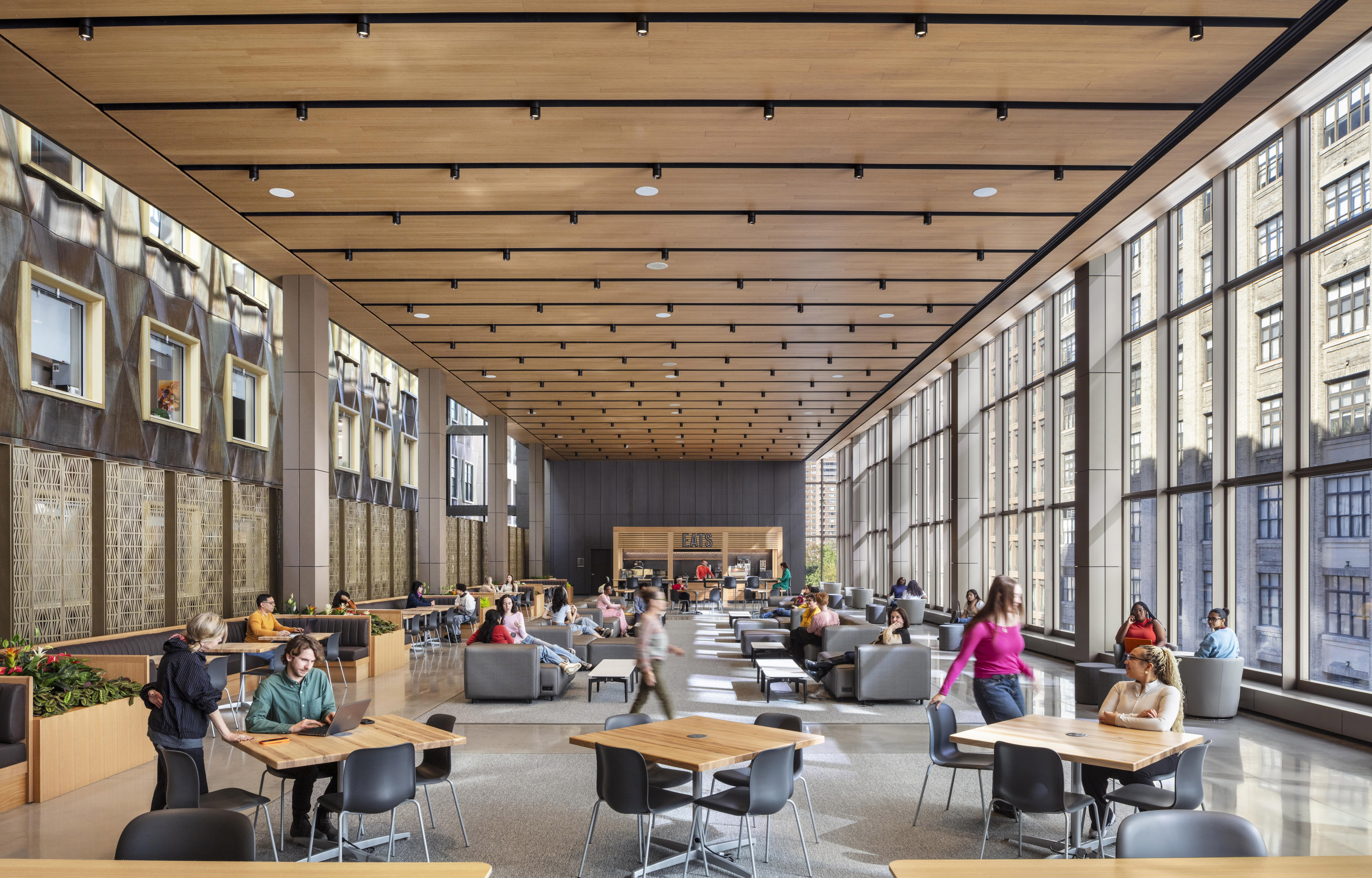
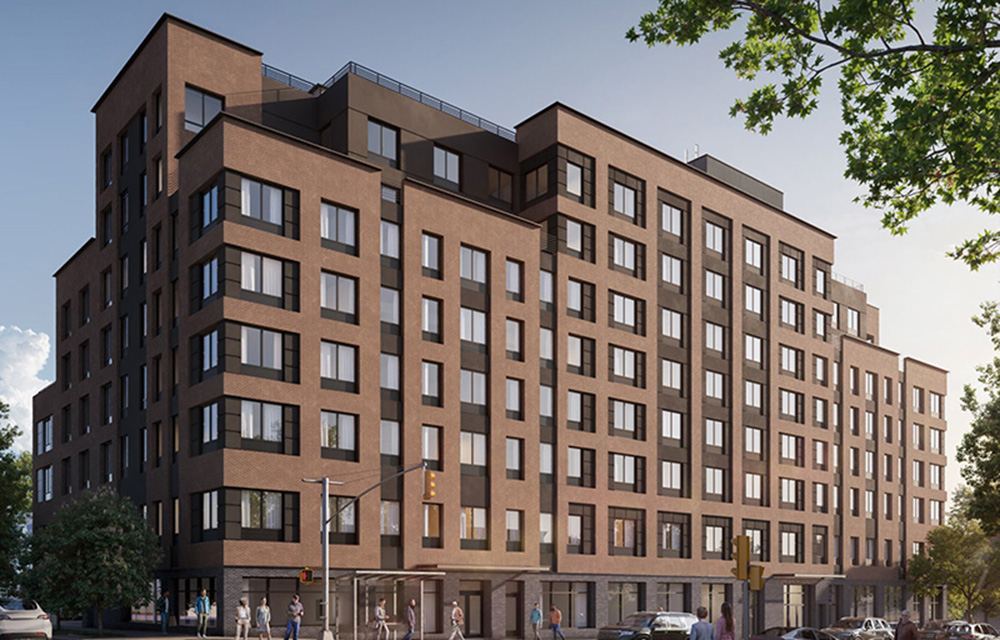
.gif)
.jpg)
.gif)
.gif)